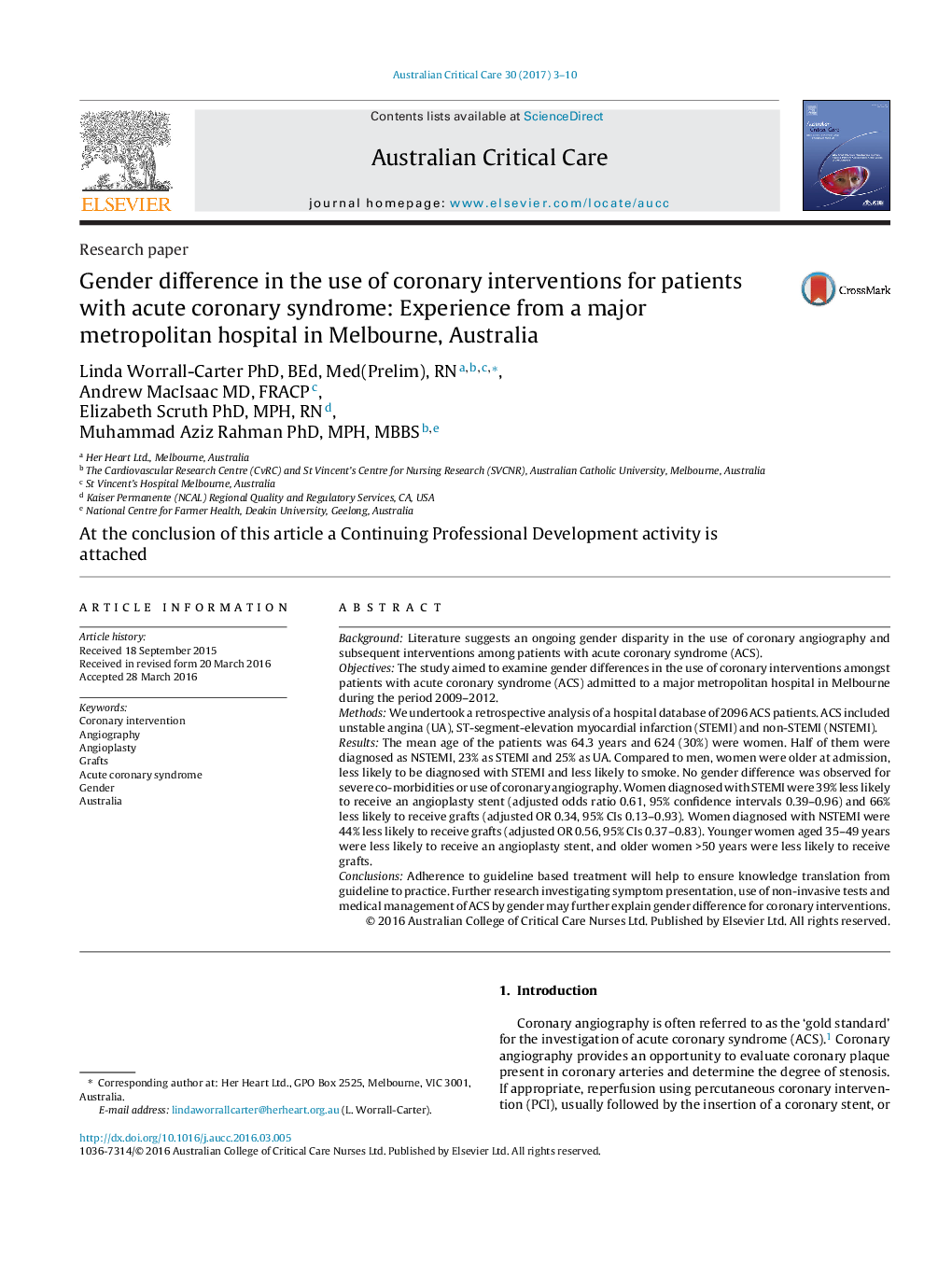| Article ID | Journal | Published Year | Pages | File Type |
|---|---|---|---|---|
| 5562958 | Australian Critical Care | 2017 | 8 Pages |
BackgroundLiterature suggests an ongoing gender disparity in the use of coronary angiography and subsequent interventions among patients with acute coronary syndrome (ACS).ObjectivesThe study aimed to examine gender differences in the use of coronary interventions amongst patients with acute coronary syndrome (ACS) admitted to a major metropolitan hospital in Melbourne during the period 2009-2012.MethodsWe undertook a retrospective analysis of a hospital database of 2096 ACS patients. ACS included unstable angina (UA), ST-segment-elevation myocardial infarction (STEMI) and non-STEMI (NSTEMI).ResultsThe mean age of the patients was 64.3 years and 624 (30%) were women. Half of them were diagnosed as NSTEMI, 23% as STEMI and 25% as UA. Compared to men, women were older at admission, less likely to be diagnosed with STEMI and less likely to smoke. No gender difference was observed for severe co-morbidities or use of coronary angiography. Women diagnosed with STEMI were 39% less likely to receive an angioplasty stent (adjusted odds ratio 0.61, 95% confidence intervals 0.39-0.96) and 66% less likely to receive grafts (adjusted OR 0.34, 95% CIs 0.13-0.93). Women diagnosed with NSTEMI were 44% less likely to receive grafts (adjusted OR 0.56, 95% CIs 0.37-0.83). Younger women aged 35-49 years were less likely to receive an angioplasty stent, and older women >50 years were less likely to receive grafts.ConclusionsAdherence to guideline based treatment will help to ensure knowledge translation from guideline to practice. Further research investigating symptom presentation, use of non-invasive tests and medical management of ACS by gender may further explain gender difference for coronary interventions.
